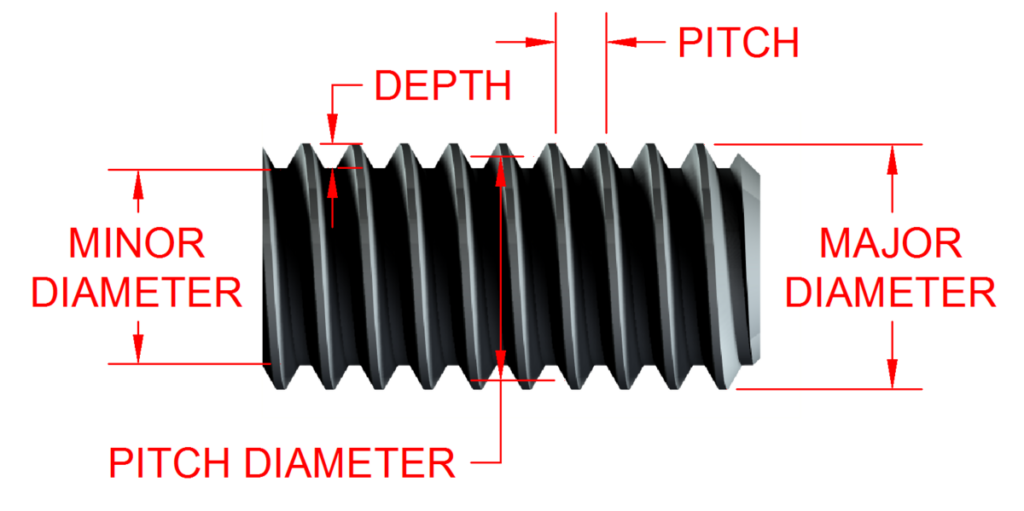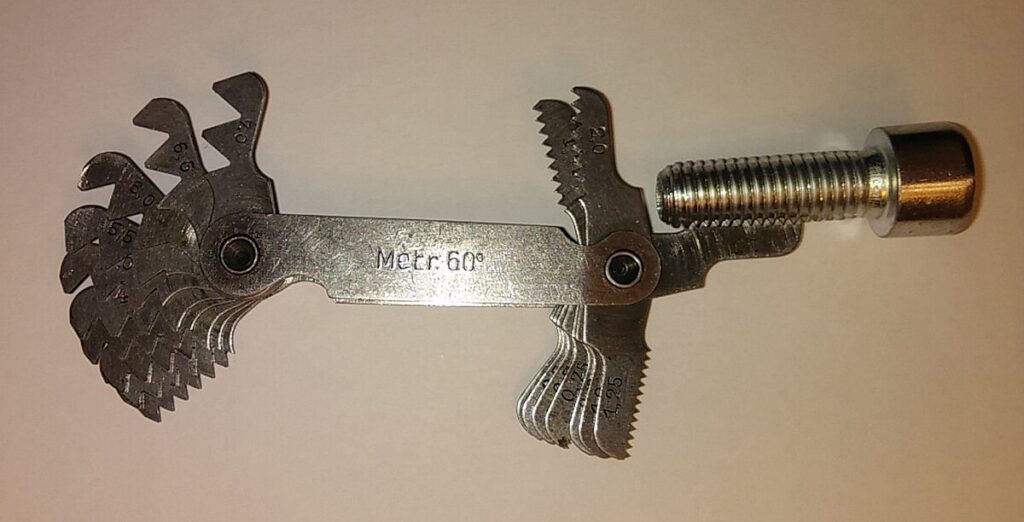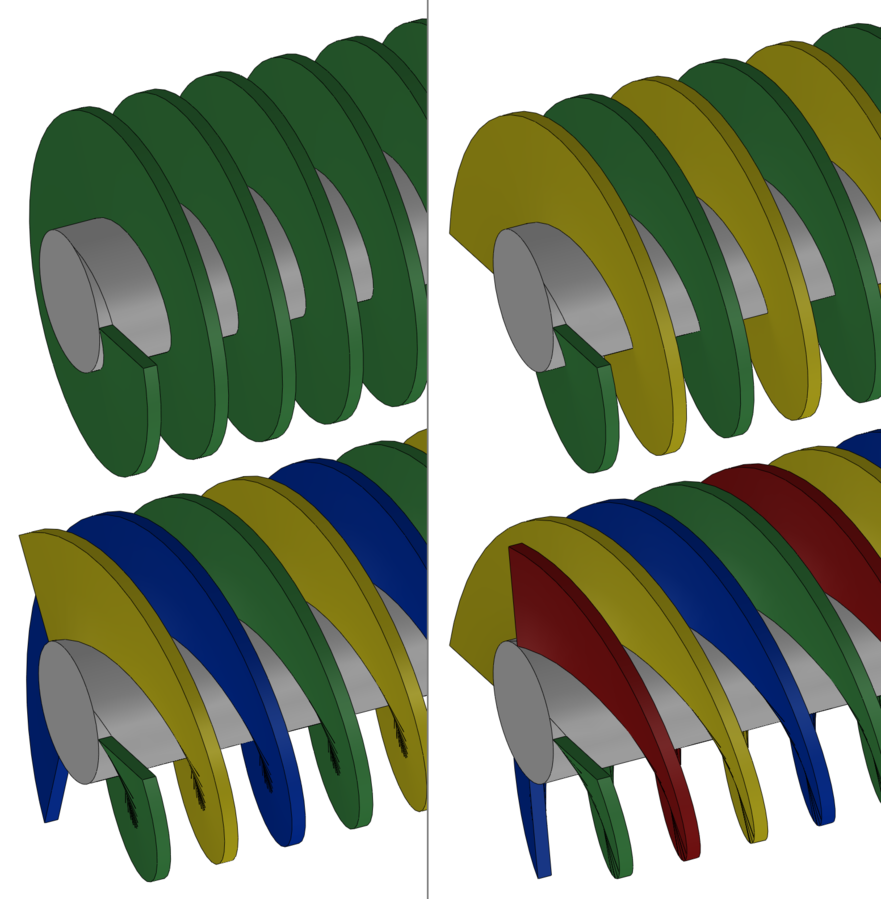What is screw pitch, and how is it different from screw lead?
Screws are ubiquitous in mechanical systems, playing a critical role in the linear drive mechanism of countless applications. To fully grasp the mechanics of screws, it is essential to understand specific technical terms — particularly “pitch” and “lead”. This blog will explore the concept of screw pitch, its importance, and how it differs from screw lead.
What is screw pitch?
Screw pitch (also known as thread pitch) is defined as the distance between two adjacent threads on a screw, measured parallel to the screw’s axis. This measurement is crucial as it directly influences the screw’s performance in various applications.

Selecting the correct screw pitch ensures compatibility with other components, facilitates the design of precise mechanical assemblies, and impacts the overall efficiency of the system.
Read more: How to recognize left hand vs. right hand threads in lead screws
Measuring screw pitch
To measure screw pitch, you can use either calipers or a more precise tool known as a pitch gauge. Accurate measurement is vital, especially for tasks requiring exact mechanical assemblies or if screws need to be replaced.
Using calipers, you can measure pitch by measuring the center-to-center distance of each thread.
A pitch gauge is designed to fit perfectly between the threads, providing an accurate measurement that is critical for ensuring that the screw will function correctly in the system.

Difference between screw pitch and screw lead
While screw pitch and screw lead are related, they are distinct concepts.
- Screw lead is the distance a screw thread advances axially in one complete turn.
- Screw pitch, as mentioned, is the distance between adjacent threads.
In a single-start screw, the pitch and lead are the same. However, in a multi-start screw, the lead is a multiple of the pitch and number of starts.
Understanding this distinction is essential for selecting the right screw for specific mechanical functions.
Relationship between screw pitch and lead screws
Lead screws are a specific type of screw designed for precise motion control, commonly used in machinery and engineering. The pitch of a lead screw significantly affects its mechanical advantage, precision, and efficiency.
A finer lead results in higher precision and greater mechanical advantage, while a coarser lead can provide faster linear movement but with less precision.
Discover: How to make a lead screw
Applications of different pitch and lead configurations
Due to the different configurations of pitch and lead, single-start and multi-start screws each have their own distinct set of applications they are often used in.
- Single-start screws have one continuous thread and are often used in applications where precision is paramount.
- Multi-start screws feature multiple threads, making them ideal for applications prioritizing fast linear movements over high levels of precision.

Choosing the right screw for your application
When selecting the appropriate screw pitch and lead, consider the following factors:
- Load capacity: The amount of axial force the screw needs to withstand.
- Precision: The level of accuracy required for the application.
- Movement speed: How quickly the screw needs to move linearly.
- Backdrive / self-locking: Determines if the screw can move with axial or rotational force, or lock when not in operation. This is common with high lead screws, especially in vertical applications.
- Torque: The higher the lead of a screw is, the greater the drive torque will become.
Infographic: How to choose a maintenance-free lead screw system
Recap
Understanding screw pitch and lead is essential to choosing the correct screw for your application, which ultimately helps avoid subpar performance or complete machine failure. However, with just a few simple steps you can reliably select the ideal screw for any application.
- For retrofits, use a pitch gauge for highly precise screw pitch measurements
- Consider the specific needs of an application, such as load capacity and required speed
- If you’re uncertain about the best choice for your application, contact an industry expert
Whether you’re working on a simple DIY task or a complex machinery setup, the knowledge of screw pitch and lead will guide you in selecting the right components for your needs.
Frequently Asked Questions
Screw pitch, also known as thread pitch, is defined as the distance between two adjacent threads on a screw, measured parallel to the screw’s axis.
Screw pitch is the distance between adjacent threads, while screw lead is the total distance the screw thread advances axially in one complete rotation.
No. They are only the same in a single-start screw. In a multi-start screw (which has multiple threads), the lead is a multiple of the pitch and the number of thread starts.
Understanding screw pitch is crucial because it directly influences the screw's performance, efficiency, and compatibility with other mechanical components in an assembly.
Screw pitch can be measured using calipers (by measuring the center-to-center distance of the threads) or, more precisely, with a pitch gauge, a tool designed to fit perfectly between the threads.
Single-start screws, where the pitch and lead are equal, are typically used in applications where precision is paramount. Multi-start screws are preferred when prioritizing fast linear movements over high precision.
When selecting the appropriate configuration, consider the required load capacity (axial force), the necessary precision, the desired movement speed, and characteristics like backdrive/self-locking and the resulting drive torque.



